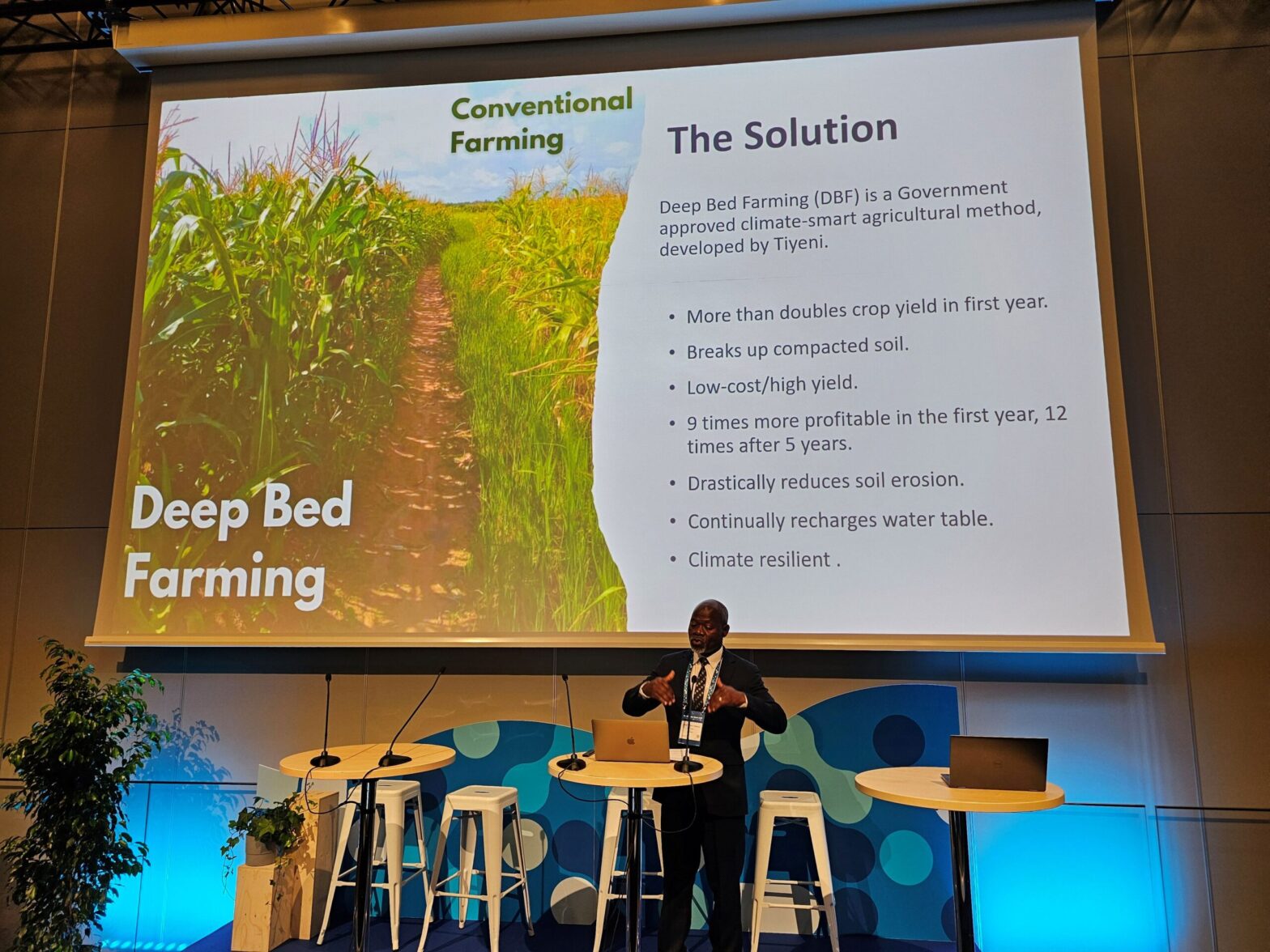On August 25, 2025, SIWI jointly organized a hybrid World Water Week session with the International Rainwater Harvesting Alliance (IRHA), MetaMeta and Tiyeni. The discussion focused on methods and financial mechanisms to restore agricultural landscapes and improve green water flows – the soil moisture available to plants – in southern Africa. The aim was to unlock the potential of rainfed agriculture through innovative financing, political leadership and best practices.
TIARA initiative
“The solution lies beneath our feet.” – Isaac Chavula, Off to Malawi
The “Transforming Investments in African Rainfed Agriculture” (TIARA) initiative is a five-year program led by SIWI and co-financed by the Leopold Bachmann Foundation. The company operates in Zambia, Zimbabwe and Malawi with local and international partners including Tiyeni, Community Technology Development Trust (CTDT), Farmers Association of Community Self-Help Investment Groups (FACHIG), Community Markets for Conservation (COMACO), Meta Meta and IRHA.
TIARA addresses severe land degradation in the Zambezi River Basin, where more than half of the total land is moderately degraded and 14 percent is severely degraded. This degradation reduces soil infiltration and water holding capacity, which directly impacts crop growth and food security for smallholder farmers, the “frontline water managers.” The program is based on three pillars:
1) Political leadership and advocacy to unlock public and private investment
2) Capacity development to scale up sustainable practices
3) Knowledge generation and business case development, including watershed impact metrics, to catalyze funding
A key insight shared during the World Water Week session was that improved rainfed agriculture can deliver six times more crop yields per dollar invested than mechanized irrigated agriculture.
Spotlight on deep-bed farming in Malawi
Isaac Chavula from Tiyeni presented Deep Bed Farming (DBF), an innovative nature-based solution that breaks up the compacted hard layer created by conventional ridge and furrow farming. DBF uses permanent wide beds and deep contour furrows that capture over 90 percent of rainfall, allowing water to penetrate, recharge aquifers and support plant growth.
The results are impressive: corn yields can increase from 2 tons to over 10 tons per hectare, and DBF is between 9 and 12 times more profitable than traditional methods.
Beyond operational-level benefits, DBF improves entire watersheds by reducing siltation, improving water quality, increasing groundwater levels and restoring ecosystems. A Payment for Ecosystem Services (PES) pilot project in the Lunyangwa watershed – in partnership with the Northern Region Water Board – is now demonstrating these wider benefits to encourage further investment.

Deep bed farming in Malawi.
Key figures for checking and attracting investments
Dr. Maganizo Kruger Nyasulu (University of Oxford) highlighted the need for verifiable metrics to show the impact of turning points and increase investor confidence. He presented a framework that covers soil health (organic carbon, soil loss), water availability (soil moisture, green water stress) and hydrological impacts (changes in water flow). These metrics can be assessed using remote sensing and modeling tools, and case studies from the Lunyangwa Basin demonstrated how sustainable practices can measurably improve environmental conditions over time.
Panel Discussion: Enabling Investment and Scaling
- Francis Muntali (Northern Region Water Board) stressed that investors need clarity on sources of capital, expected returns, risks and exit strategies, and encouraged governments to introduce incentives such as tax breaks and low-interest loans.
• Malcolm Spence (Global Innovation Fund) highlighted the importance of compelling evidence – both environmental and economic – to de-risk investments and support farmer uptake.
• McPherson Ntara (Malawian Land Resources Conservation Department) highlighted the role of coherent policy frameworks and noted the challenge of harmonizing regulations across government silos.
• Renier Veldman (MetaMeta) discussed “supported self-sufficiency,” a model that allows households to develop their own water sources, increasing personal responsibility and long-term sustainability.
• Han Heinen (IRHA) reported on community-led rainwater harvesting work in Nepal, emphasizing trust, local knowledge and participatory approaches.
Final Thoughts
Alex Girard (Tiyeni) noted significant progress, including the formal introduction of deep-bed farming by the Malawian government. The remaining challenge is to combine effective on-the-ground practices with supportive policies and innovative financing to scale solutions across Africa and ultimately build resilient landscapes and communities.
